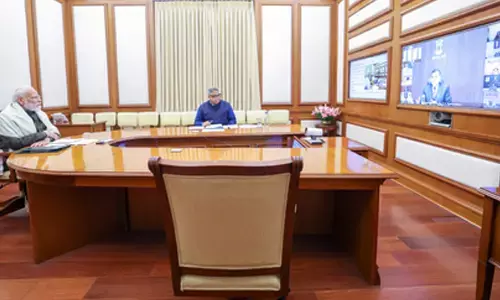Coronavirus fiscal support 'modest', direct govt spending at 1.2% of GDP: Moody's

Moody's
Centre's latest measures aimed at inducing consumer demand have been termed as too less and also quite late given the impact the pandemic had on the economy.
New Delhi: Centre's latest measures aimed at inducing consumer demand have been termed as too less and also quite late given the impact the pandemic had on the economy.
Moody's Investors Service has said that even if the latest measures are combined with the economic package announced in May, the size of the measures remains modest.
A Moody's report noted that that the second round of fiscal stimulus amounts to just 0.2 per cent of the country's real GDP forecast for the financial year 2021.
Notwithstanding the fiscal prudence of the measures, the small scale of the stimulus highlights limited budgetary firepower to support the economy during a very sharp contraction, a credit negative, it said.
"In total, the two rounds of stimulus bring the government's direct spending on coronavirus-related fiscal support to around 1.2 per cent of GDP. This compares with an average of around 2.5 per cent of GDP for Baa-rated peers as of mid-June," it said.
As per Moody's India's very weak fiscal position has constrained its scope for discretionary stimulus spending in response to the coronavirus shock.
"We expect the general government debt burden to peak at around 90 per cent of GDP in 2020, up from about 72 per cent of GDP in 2019, which is significantly higher than the Baa median of around 59 per cent. The large debt burden is driven by chronically wide fiscal deficits."
While the latest stimulus will spur consumer spending over the near term as coronavirus-related restrictions continue to be eased and India's festive season begins, the support to growth will be minimal, it noted.
It forecasts growth to rebound to 10.6 per cent in the next financial year, reflecting the comparison with the low GDP levels of 2020 as economic activity gradually normalizes.
"Over the medium term, we expect growth to settle around 6 per cent, with downside risks due in part to ongoing stress within the financial system. A series of recent agricultural sector and labor law reforms, which were announced as part of broader structural reforms and approved by India's parliament in September, could provide support to medium-term growth, if implemented effectively," it added.















